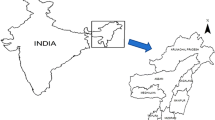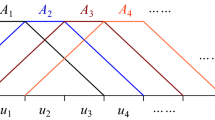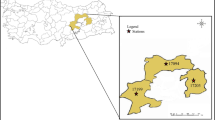Abstract
Time series prediction has attracted attention of many researchers as well as practitioners from different fields and many approaches have been proposed. Traditionally, sliding window technique was employed to transform data first and then some learning models such as fuzzy neural networks were exploited for prediction. In order to improve the prediction performance, we propose an approach that combines chaotic theory, recurrent fuzzy neural network (RFNN), and K-means. In the past few decades, fuzzy neural networks have been proven to be a great method for modeling, characterizing and predicting many kinds of nonlinear hydrology time series data such as rainfall, water quality, and river runoff. Chaotic theory is a field of physics and mathematics, and having been used to solve many practical problems emerging from industrial practices. In our proposed approach, chaotic theory is firstly exploited to transform original data to a new kind of data called phase space. Then, a novel hybrid model namely RFNN-KM including several RFNNs that are mixed together by K-means algorithm is used to perform prediction. We conduct experiments to evaluate our approach using runoff data of Srepok River in the Central Highland of Vietnam. The experiment results show that the proposed approach outperforms the one combining RFNN and sliding window technique on the same experiment data.
Access this chapter
Tax calculation will be finalised at checkout
Purchases are for personal use only
Similar content being viewed by others
References
Benmouiza K, Cheknane A (2013) Forecasting hourly global solar radiation using hybrid k-means and nonlinear autoregressive neural network models. Energy Convers Manage 75:561–569
Bhardwaj S et al (2010) Chaotic time series prediction using combination of hidden markov model and neural nets. In: Proceedings of the 9th international conference on computer information systems and industrial management applications, pp. 585–589
Cellucci CJ, Albano AM, Rapp PE (2003) Comparative study of embedding methods. Phys Rev 67
Chang FJ, Chiang YM, Tsai MJ, Shieh MC, Hsu KL, Sorooshian S (2014) Watershed rainfall forecasting using neuro-fuzzy networks with the assimilation of multi-sensor information. J Hydrol 508:374–384
Du B, Xu W, Song B, Ding Q, Chu SC (2014) Prediction of chaotic time series of rbf neural network based on particle swarm optimization. Intell Data Anal Appl 298:489–497
Duong HN (2006) Using rfnn to predict price of products in market. In: Proceedings of 9th Conference on Science and Technology, Ho Chi Minh City University of Technology, pp. 34–43
Duong HN, Nguyen QNT, Bui LT, Nguyen HT, Snasel V (2014) Applying recurrent fuzzy neural network to predict the runoff of srepok river. In: Proceedings of 13th international conference on computer information system and industrial management applications, pp. 55–66, Vietnam
Hegger R, Kantz H, Schreiber T (2007) Tisean 3.0.1, nonlinear time series analysis. http://www.mpipks-dresden.mpg.de/~tisean/
Kar S, Dasb S, Ghoshb PK (2014) Applications of neuro fuzzy systems: a brief review and future outline. Appl Soft Comput 15:243–259
Nhan NH (2013) Tidal forecasting data in 2014. http://www.icoe.org.vn/index.php?pid=551
Rosenstein MT, Collins JJ, Luca CJD (1993) A practical method for calculating largest lyapunov exponents from small data sets. Physica D 65:117–144
Sarangi PP, Sahu A, Panda M (2013) A hybrid differential evolution and back-propagation algorithm for feedforward neural network training. Int J Comput Appl 84
Shang P, Li X, Kamae S (2005) Chaotic analysis of traffic time series. Chaos Solitons Fractals 25:121–128
Shudong Z, Weiguang L, Jun N, Lina WGZ (2010) Combined method of chaotic theory and neural networks for water quality prediction. J Northeast Agric Univ 17:71–76
Todorov Y, Terziyska M (2014) Modeling of chaotic time series by interval type-2 neo-fuzzy neural network. Artif Neural Netw Mach Learn 8681:643–650
Yadav AK, Sachan AK (2012) Research and application of dynamic neural network based on reinforcement learning. In: Proceedings of the international conference on information systems design and intelligent applications, pp. 931–942
Acknowledgments
This work was supported by the IT4Innovations Centre of Excellence project (CZ.1.05/1.1.00/02.0070), funded by the European Regional Development Fund and the national budget of the Czech Republic via the Research and Development for Innovations Operational Programme and by Project SP2015/146 Parallel processing of Big data 2 of the Student Grand System, VŠB - Technical University of Ostrava.
Author information
Authors and Affiliations
Corresponding author
Editor information
Editors and Affiliations
Rights and permissions
Copyright information
© 2015 Springer International Publishing Switzerland
About this paper
Cite this paper
Duong, H.N., Nguyen, H.T., Snasel, V. (2015). A Hybrid Approach for Predicting River Runoff. In: Abraham, A., Jiang, X., Snášel, V., Pan, JS. (eds) Intelligent Data Analysis and Applications. Advances in Intelligent Systems and Computing, vol 370. Springer, Cham. https://doi.org/10.1007/978-3-319-21206-7_6
Download citation
DOI: https://doi.org/10.1007/978-3-319-21206-7_6
Published:
Publisher Name: Springer, Cham
Print ISBN: 978-3-319-21205-0
Online ISBN: 978-3-319-21206-7
eBook Packages: EngineeringEngineering (R0)




